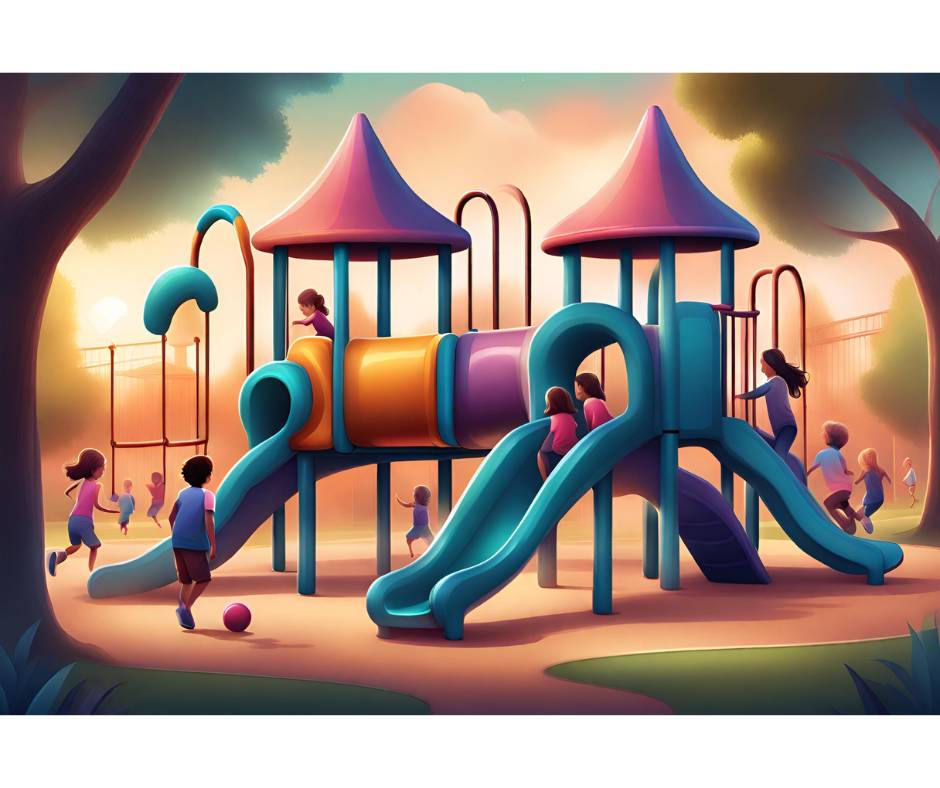Building a playground can instantly beautify a community and bring people together by giving their kids a place to play. But it’s important to recognize that not all kids play the same way or are going through the same stages of development.
When designing a playground, what should you keep in mind for different age groups? Is it possible to build a playground that targets all age groups equally?
Age Groups to Consider
According to Matt Allison of Actively Play, most playgrounds target children in the following age groups:
Infants 6-23 months.
Most children under the age of 2 aren’t going to be able to take advantage of most of the features associated with modern playgrounds. However, building playgrounds that are specialized for children within this age range is increasingly popular. Features of playgrounds designed for infants include structures that primarily promote sensory development and designs that encourage exploration. Small slides, simple climbing obstacles, and interactive panels with visual or audio components are common.
Children 2-5 years.
For children between 2 and 5 years old, playgrounds can be more physically challenging and immersive, but it’s still important to take care that the features remain accessible, as these children still don’t have full motor skill development. Higher climbers and slides are common features here, and you can start adding other physically demanding features as well.
Children 5-12 years.
Children within this age range are much more coordinated and are more familiar with navigating playground equipment. Accordingly, they can handle bigger slides and bigger climbers, as well as more complicated equipment like overhead climbers and net climbers.
Children 2-12 years.
It’s hard to design playground equipment that can target both infants and older children, but it is possible to design equipment that is engaging for children between the ages of 2 and 12. Some freestanding equipment like swings, seesaws, and spring riders may be categorized as 2-12 by the manufacturer. Playground structures tend to have lower decks, slides, and climbers than 5-12 equipment.
Key Considerations When Designing and Constructing a Playground
If you’re planning on designing and constructing a playground, these are some of the most important considerations you’ll need to bear in mind:
Targeting and age appropriateness.
Obviously, you’ll need to think carefully about what age range to target and structure options for each of those demographics. The bigger your age range is, the more space you’ll need and the more options you’ll need to provide – but obviously, if you choose to target a narrower range, you’ll be excluding some kids from being able to enjoy the playground.
Total space and layout.
How much space do you have to work with? And what layout options are available to you? The more space you have, the more room you’ll have for playground equipment and the more creative you can get with your layout. If you have a restrictive space, you may have to think more narrowly about which age ranges you want to target. It’s a good design practice to group equipment together for different age groups. For example, if you have equipment for 2-5 years and equipment for 5-12, you’ll want to separate them in the playground design so kids can play in the area that matches their ability.
Budget constraints.
A simple backyard playground may cost a few hundred to a few thousand dollars, but for a much bigger commercial playground, you might pay six figures or more. The bigger your budget is, the more options you’re going to have to choose from. You may have to constrain your target age range if you’re working with a severely limited budget.
Surfacing.
You’ll also need to think about the surfacing of your playground. Children often like to play rough and will likely fall down at least occasionally when navigating this equipment, regardless of how age appropriate it is. You’ll need a soft place for them to land – and some surfacing options (like solid rubber surfaces) are more suitable for young children than others.
Compliance with safety standards.
If you’re building a playground that’s going to be accessible to the public, you’ll also need to comply with safety standards. For example, the American Society for Testing and Materials (ASTM) and Consumer Product Safety Commission (CPSC) both set guidelines for playgrounds.
You can build a playground for children of almost any age, including infants who are only starting to develop physical and mental abilities. However, designing a playground to serve a wide range of ages and abilities will take careful planning. If you want to make sure your playground is safe, fun, and fully engaging, you’ll need to identify your target age ranges and design your playground with those kids in mind.













